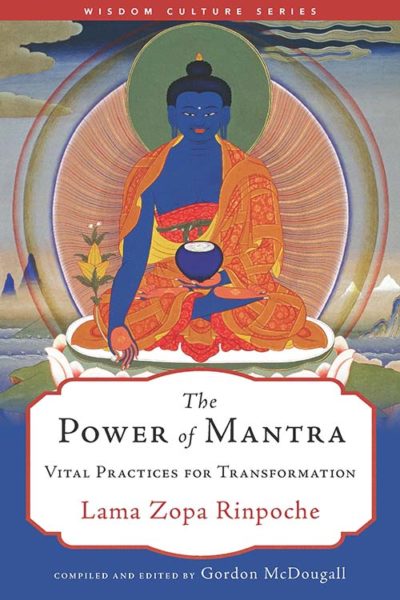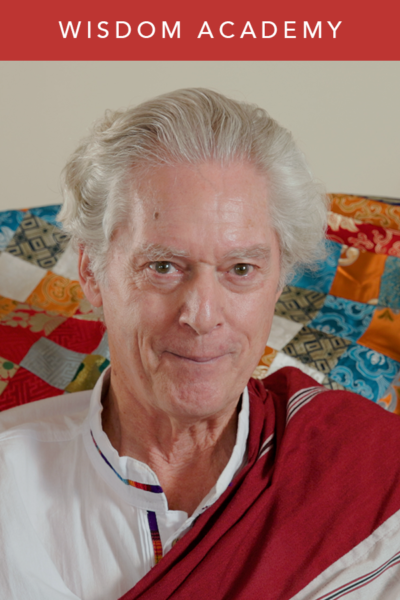In this lesson, Thupten Jinpa introduces Abhidharma Psychology from a broader perspective, looking at the fundamental ideas that can be found in Buddhist psychology all the way back to the Buddha himself. He also focuses on the emergence of Abhidharma and explains its key aspects. Jinpa then highlights how understanding the primacy of the mind helps us understand the state of happiness and suffering. Additionally, he shares how the framework of the five aggregates is foundational to Abhidharma analysis. Jinpa discusses the evolution of Abhidharma and explains how Abhidharma systematically attempts to organize the Buddha’s teachings.
-
-
Dzogchen teaching discourse typically comprises presentations of the essence, nature, and compassion of the basis. Among these three concepts, the essence—original purity (tib. ka dag)—is the focus of the course’s second lesson. Malcolm characterizes this original purity on the basis of a detailed section (never before presented in English) on the ten pristine consciousnesses found in the Realms and Transformations of Sound Tantra (tib. sgra thal ’gyur gyi rgyud). Cataloging the varied interpretations of the term often translated as “clear light” (skt. prabhāsvara; tib. ‘od gsal), Malcolm establishes the concept of primordial buddhahood and discusses original purity as a mere negation—“that in which no ignorance has ever existed.” He explains how understanding this original purity necessitates a comprehensive explanation of ignorance and how it arises that is not present in any other category of Buddhist teachings.
-
Ācārya Malcolm Smith has been a student of the Great Perfection teachings since 1992. His main Dzogchen teachers are Chogyal Namkhai Norbu, the late Kunzang Dechen Lingpa, and the late H.H. Taklung Tsetrul Rinpoche. He is a veteran of a traditional three-year solitary Tibetan Buddhist retreat, a published translator of Tibetan Buddhist texts, and was awarded the Āchārya degree by the Sakya Institute in 2004. He graduated in 2009 from Shang Shung Institute’s School of Tibetan Medicine. He has worked on translations for renowned lamas since 1992, including His Holiness Sakya Trizin, Kunzang Dechen Lingpa, Khenpo Migmar Tseten, Tulku Dakpa Rinpoche, and many others. His works include Buddhahood in This Life and The Self-Arisen Vidya Tantra (vol 1) and The Self-Liberated Vidya Tantra (vol 2).
-
Lama Alan explains carefully how the sūtra teachings on the four noble truths, emptiness, and Buddha nature prepare a disciple for Vajrayāna methods such as Dzogchen or Mahāmudrā by refining the idea of the luminous mind to introduce the innate mind of clear light. You’ll learn about how the uncommon features of tantra—including working with the channels, winds, and drops—offer a unique opportunity to empower the efficacy of your practice.
-
Lama Alan Wallace describes how references to selflessness and the luminous mind in the Pali canon and Perfection of Wisdom sūtras prepare the student for the teachings on manifesting their own Buddha nature in the context of the third turning of the wheel of Dharma. You’ll recognize how to identify what engenders happiness and suffering and how to remove the veils obscuring your pure, primordial awareness.
-
Lama Alan explores the motivational statements from Atiśa and Prajñāmokṣa in the text, testing their relevance a millennium after being written down. Without diluting or modernizing the Dharma, these teachings can illuminate the darkest depths of delusion, opening the lotus of the heart for the benefit of all sentient beings. The ‘‘just-that-ness’’ of emptiness transcends karma, afflictions, and self-centered attachment. Resting in sheer luminosity, the distilled mind without additives provides the ultimate inner refuge.
Lama Alan draws comparisons with Dzogchen and Mahāmudrā traditions and this pristine awareness that is the essential nature of the mind, the dharmakāya. Not looking elsewhere, the mind itself is the nature of the Buddha.
-
Atisa’s Pith Instructions on the Middle Way
In this introductory lesson, Thupten Jinpa explores the importance of the philosophy of emptiness and how it constitutes, directly or indirectly, the entirety of the Buddha’s teachings. The cultivation of such wisdom is the ground, path, and result of the Mahayana way, providing an antidote to the fundamental ignorance grasping at intrinsic existence. By analyzing the grasping to inherent reality and the conceptual elaborations that arise from such a belief, a wisdom opposite to the active “mis-knowing” of ignorance can be attained.
The tendency to project the permanence of phenomena is implicit in the very architecture of perception and language. This means that an intellectual understanding of the emptiness of inherent existence is not enough to cut the root of innate grasping. Mādhyamika analysis challenges the multiplicity of assumptions that arise in everyday life, ultimately silencing the mental chatter of conceptual elaborations. By making peace with not seeking grounding in objective existence, the mind can find respite in the quiet of the inexpressible truth of emptiness.
| There are no products in your cart. |



